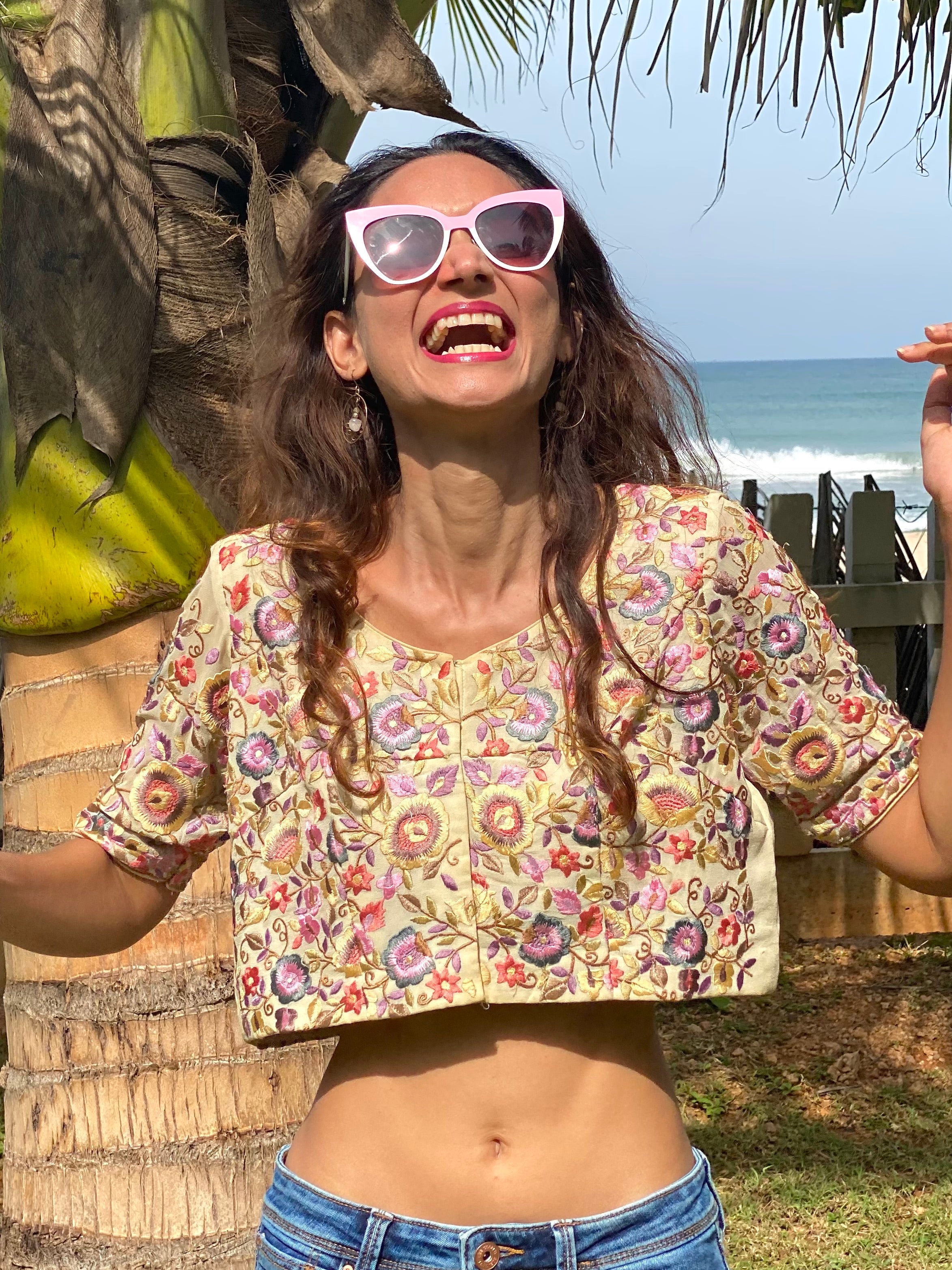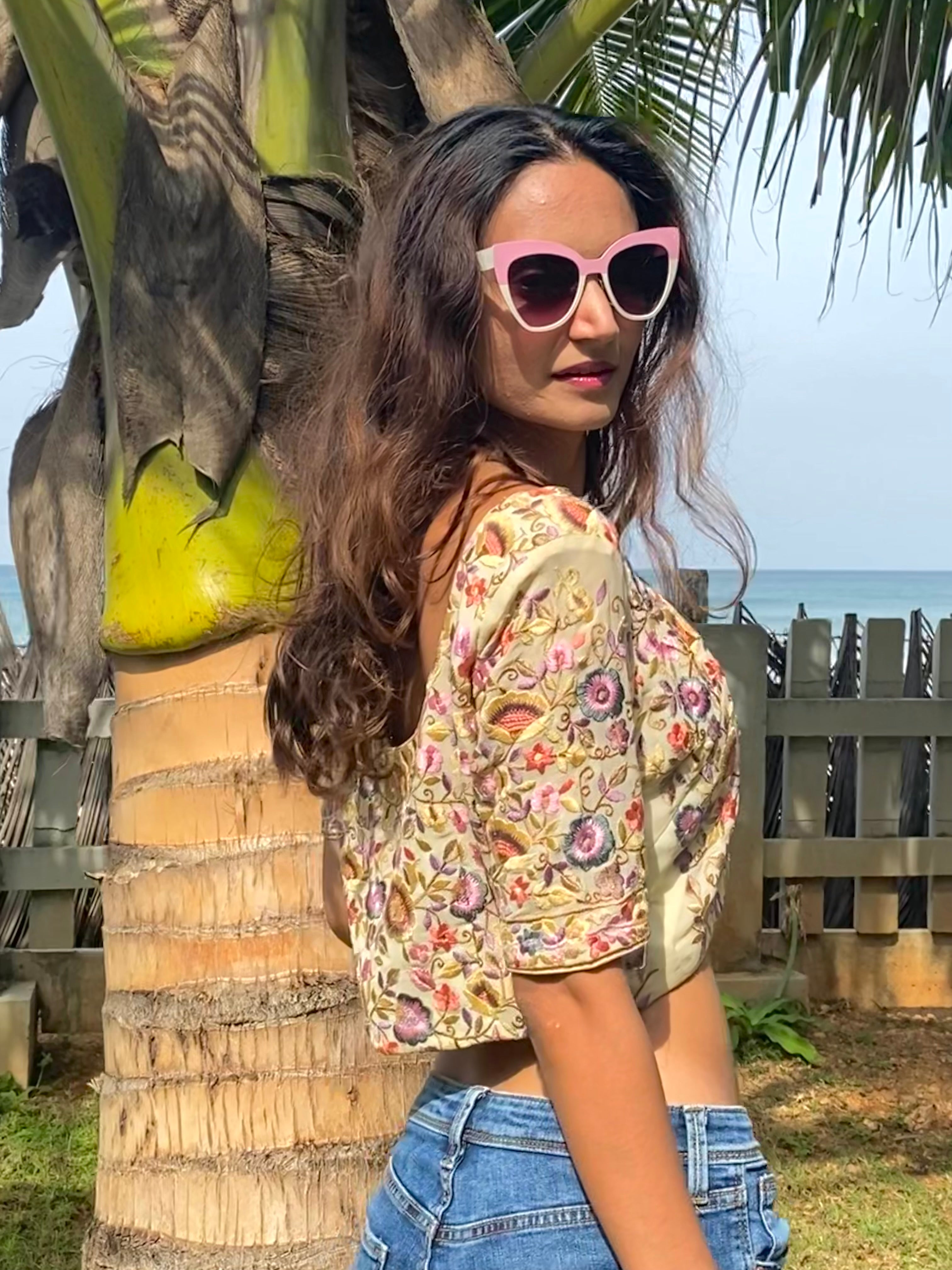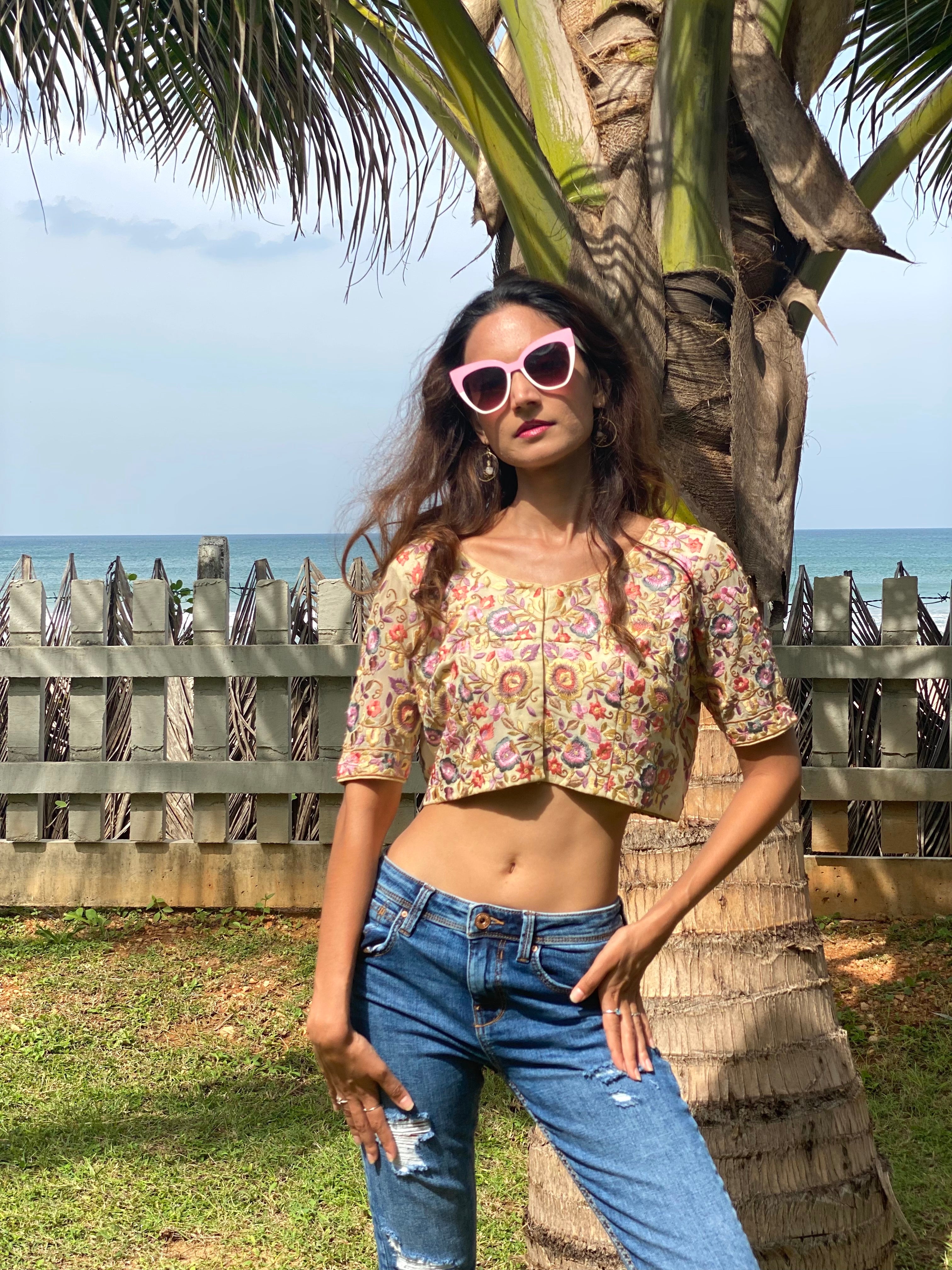After moving from Persia to India, the Parsis were granted land which would be ruled by priestly families. Due to the growth in the Parsis population, they were forced to move to other regions of Gujarat which resulted in the establishment of five districts which would then be ruled by priestly dynasties. After the British took control of India, the Parsis received modern education which allowed them to improve their standards of living. Most of the educated Parsis stopped working in the agricultural sector to go to Bombay(Mumbai) and work for the British which was considered more lucrative. This is why the Parsi Gara saree became such a high symbol of prestige and wealth.
Model is a size: SMALL, BUST: 34", WAIST: 24"





















